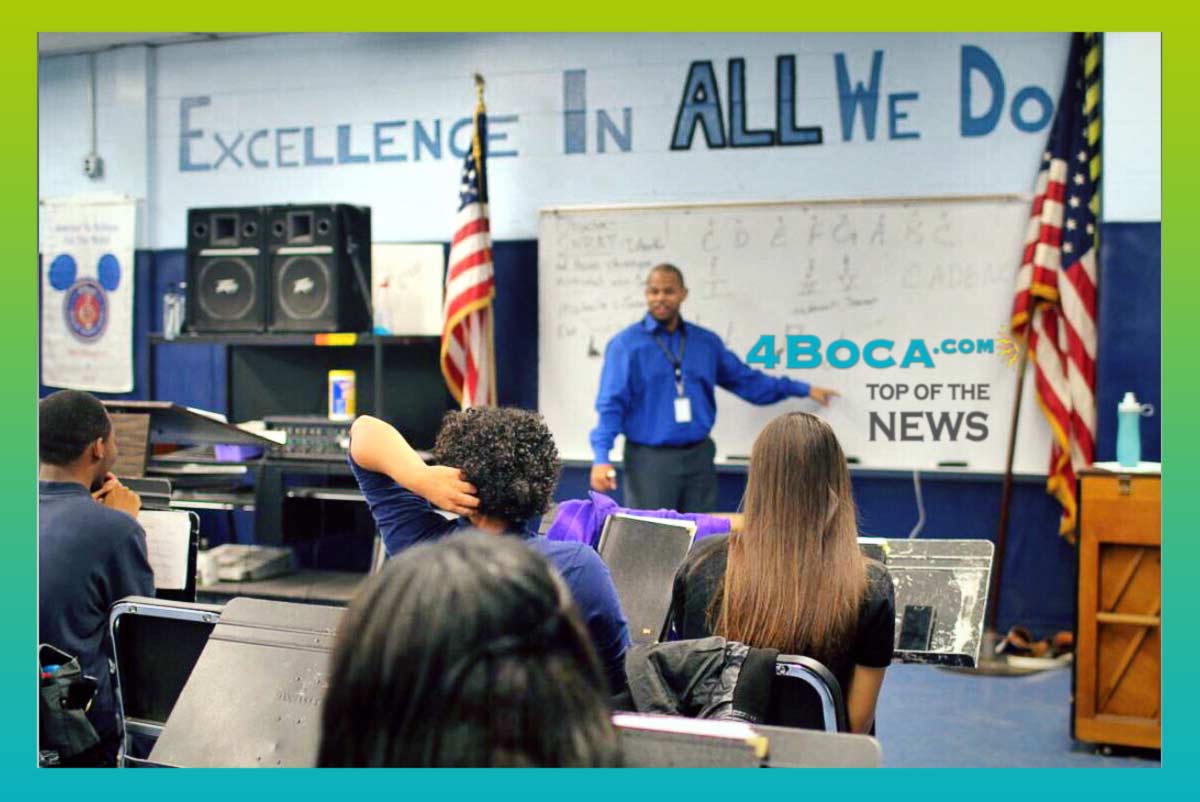What is “Top of the News?”
Dr. Robbe, a teacher of mine at Boca Raton High School in the 80’s, used to entice the young people with relevant economic, social, political and military local, domestic and international events. It was called Top of the News!
- Doctor Robbe would go through the headlines each morning and pick which were worth his student’s attention. He’d always have this done before class, before students arrived in his room for the day.
- Also, before class, he’d copy around four story headlines on the black board each morning, filling one half the entire blackboard with the headlines and a short story description. He’d sum up what each story was about for us.
- We’d then have to copy the whole thing down ourselves, like pre-digital age scribes, into a notebook where we’d keep our “Top of the News” stories.
- All along we’d talk about the stories. By the end of class you’d spent most of the time talking about the subjects with classmates.The discussion was managed by Dr. Robbe acting as referee. He made sure the discussion didn’t get off track. This was the fun and engaging part.
- At the end of each month Dr. Robbe would give a quiz containing questions about some of the issues we discussed.
Going to college at FAU, expecting the experience to be similar, was a giant disappointment. Instead of being around students and teachers who wanted to take that kind of discussion dynamic to the next level, there was instead a unidirectional flow of information. That resulted in a whole lot of silence between students. There were certain faculty who liked discussion and debate, but only privately, one-on-one, not inside their classrooms.
I looked back at “Top of the News”, knowing I didn’t have the means to understand how good I had it back in Boca High, thanks to Dr. Robbe taking a progressive, networked approach to information flow. He had the courage to let go of the information hierarchy of teaching, and let something really special bloom. He created a place where his students could genuinely practice the art of discussion. He created an environment where his students delved into creative thinking and expressing ideas.
Since, with the Internet, there’s been a lot of room for people to have discussions. There’s a lot of power of connection at out fingertips. My children have the power to inform themselves that was in it’s rawest infancy when I was their age. But with all this power there’s a lot of chaos. Today there’s credible information coming from less-than-credible sources and yesterday’s trusted information authorities have become addicted to deception. There’s just so much.
So WHY Top of the News?
Young people need the ability to critically examine information sources, understand the biases of others against their own. Examining stories in a classroom setting is needed now more than ever.
Selecting the stories to be examined, together, as a class is a valuable exercise in itself. These, and similar, news stories are going to be exposed to students while they sit alone on their computers and phones, so it’s important to experience how a range of opinions can exist. Leaning how to live together in a world where a range of opinions can still exist in harmony is possible, but it has to be learned, has to be practiced. Learning how to think with an open mind doesn’t mean you can’t still have opinions. Learning how to share opinion without making people who disagree feel offended or oppressed is a skill, a skill that comes from a refereed discussion, a discussion in front of your peers. Top of the News stories are what stimulates that process.
But do we have to copy it down?
Dr. Robbe made us copy down the stories with pen or pencil, onto paper. I hated that. He was a teacher who learned how to teach in the seventies, when brain studies and the teaching profession imagined they had a bright future together. The idea of getting us to copy it down like that surely had learning theory behind it, and it was a lot more effective at making you take note of the story. It was a sort of meditation. It worked. But I still hated it. It was like some unsettling Dharma Initiative experiment where making the students miserable somehow translated into getting them excited about discussing contemporary events.
What about Top of the News today?
Here’s my suggestion for using this site and doing Top of the News the modern way:
- Students and teachers look at the local and global aggregated news headlines on the homepage of 4boca.com, and choose 3 stories that they want to discuss together in the classroom.
- Each story is clicked on and read together as a class. The teacher should show the student how to consider the source, ask questions about it, and let the students briefly discuss the story, perhaps digging a little deeper together into the subjects.
- Teachers should strive to do their best to keep the discussion focused and honest.
Especially at some of the “best” colleges, students won’t get many other chances to practice these critical “social environment” skills before they hit the workplace.
Leveraging Top of the News for Extra Credit
Students are then encouraged to go home and do some extra research on the topic or topics that interest them. Students are encouraged to seek out alternate opinions and debate on the subject, especially information that credibly contradicts or substantially adds to the article first chosen. Over the weekend students are expected to choose one story from the week that just ended and share “what else” they learned about the subject.
Not written in stone, obviously
Information technology and behaviors people practice to inform themselves will always be evolving. The rules of “Top of the News” aren’t written in stone. Having discussion be practiced, in contrast to our increasing digital isolation, is even more important now than it was when I was first excited about “Top of the News”. This site, 4boca.com, is just one iteration performed in the spirit of Top of the News. One of this site’s many intents is to make the curation and selection of headlines easier for students and teachers, so Top of the News in the classroom can get right to discussion. How it takes place, in the classroom, is something I hope teachers will experiment with, continue to evolve, and use this site as a means to share experiences.











